- Choose the Right Seeds
- Prepare the Soil
- Sowing the Seeds
- Provide Adequate Watering
- Ensure Proper Sunlight
- Protect from Pests and Diseases
- 1. Monitor for Pests
- 2. Use Organic Pest Control
- 3. Provide Adequate Watering
- 4. Practice Crop Rotation
- 5. Maintain Proper Spacing
- 6. Remove Infected Plants
- Transplanting and Picking
- When to Transplant
- Preparing the New Location
- Transplanting Process
- Picking Seedlings
- Expert Tips for Successful Growth
- 1. Choose the Right Variety
- 2. Prepare the Soil
- 3. Sow the Seeds
- 4. Provide Adequate Sunlight
- 5. Water Carefully
- 6. Fertilize Wisely
- 7. Control Weeds
- 8. Prune and Pinch
- 9. Monitor for Pests and Diseases
- 10. Harvest with Care
- Questions and Answers:
- What is kochia?
- How do you grow a seedling of kochia?
- What are the care requirements for kochia seedlings?
- How do you pick kochia seedlings?
- Can kochia be grown in containers?
- Is kochia an invasive plant?
- Videos: Kochia plants Care and Propagation tips // Best summer plants
Are you looking to grow your own seedling of kochia, the versatile plant known for its attractive foliage and variety of uses? Look no further! In this article, we will guide you through the process of sowing, caring for, and picking a kochia seedling, providing you with expert tips to ensure success. Whether you are a beginner or experienced gardener, these tips will help you cultivate a healthy and vibrant kochia seedling.
First, let’s start with the sowing process. Kochia seeds are relatively small and should be sown directly into the soil rather than starting them indoors. Choose a sunny location in your garden with well-drained soil. Prepare the soil by removing any weeds and loosening it with a garden fork or tiller. Sow the seeds thinly and evenly, about 1/4 inch deep, and cover them lightly with soil. Water the area gently to settle the soil and keep it consistently moist until germination occurs, which typically takes about 7-10 days.
Once the kochia seedlings emerge, it’s important to provide them with proper care to ensure their healthy growth. Thin the seedlings to about 12-18 inches apart to prevent overcrowding and competition for nutrients. Water the seedlings regularly, aiming to keep the soil consistently moist but not waterlogged. Avoid overhead watering to prevent fungal diseases. Apply a balanced fertilizer every 4-6 weeks to provide the seedlings with essential nutrients for their growth.
As the kochia seedlings continue to grow, they will require picking to maintain their shape and encourage bushier growth. Pinch the tips of the seedlings once they reach a height of about 6-8 inches. This will stimulate branching and result in a fuller, more compact plant. Repeat the picking process every few weeks as needed. If you prefer a taller plant, space out the picking intervals to allow for more vertical growth.
By following these expert tips for sowing, caring for, and picking a kochia seedling, you can enjoy a beautiful and vibrant plant in your garden. Whether you intend to use kochia for decorative purposes or as a dried flower arrangement, its unique texture and versatile nature make it a fantastic addition to any garden.
Choose the Right Seeds
When it comes to growing a seedling of Kochia, choosing the right seeds is essential. Here are some tips to help you select the best seeds for your garden:
- Check for Quality: Look for seeds that are fresh and of good quality. Avoid seeds that are discolored, damaged, or shriveled.
- Consider the Source: Purchase seeds from a reputable supplier or seed company. They are more likely to have high-quality seeds that have been properly stored.
- Choose the Right Variety: Kochia comes in different varieties, so consider your specific needs when selecting seeds. Some varieties may be more suitable for ornamental purposes, while others may be better for medicinal or culinary uses.
- Read Reviews: If you’re not sure which variety to choose, read reviews from other gardeners or experts. Their opinions and experiences can provide valuable insights.
- Consider the Climate: Take into account the climate of your region and choose seeds that are suited to your growing conditions. Some varieties of Kochia may tolerate cold weather better, while others may thrive in hotter climates.
By carefully choosing the right seeds, you can set your Kochia seedling up for success from the very beginning. Remember to follow the instructions on the seed packet for optimal sowing and care techniques.
Prepare the Soil
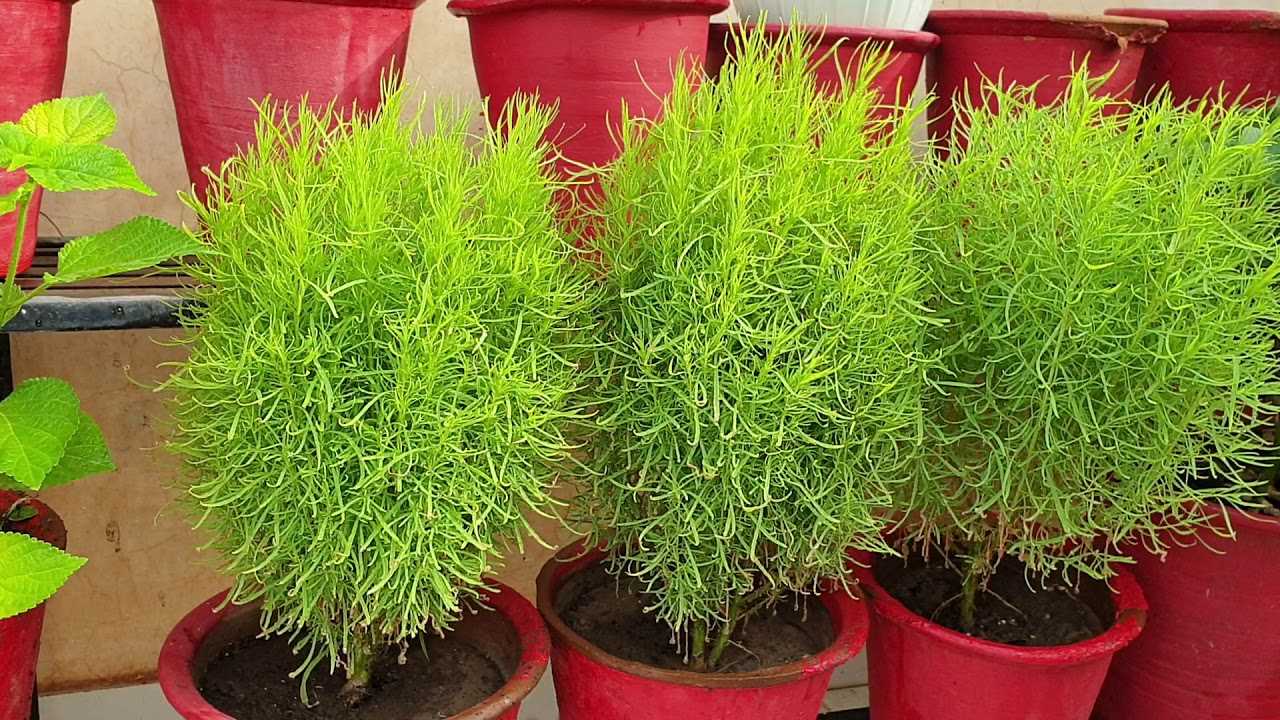
Before sowing the kochia seedling, it is important to prepare the soil properly. Here are the steps to follow:
- Choose the right location: Kochia prefers well-draining soil and full sunlight. Select a spot in your garden that receives at least 6-8 hours of direct sunlight each day.
- Clear the area: Remove any weeds, rocks, or debris from the planting area. Kochia needs space to grow without competition.
- Loosen the soil: Use a garden fork or a tiller to loosen the soil to a depth of 6-8 inches. This will help the roots of the seedling to penetrate the soil easily.
- Improve the soil: If your soil is heavy clay or sandy, consider adding organic matter such as compost or well-rotted manure. This will improve the soil structure and provide essential nutrients for the kochia seedling.
- Level the soil: Use a rake to level the soil surface. This will ensure an even distribution of water and prevent waterlogging.
Once you have prepared the soil, you are ready to sow the kochia seeds and start caring for your seedling.
Sowing the Seeds
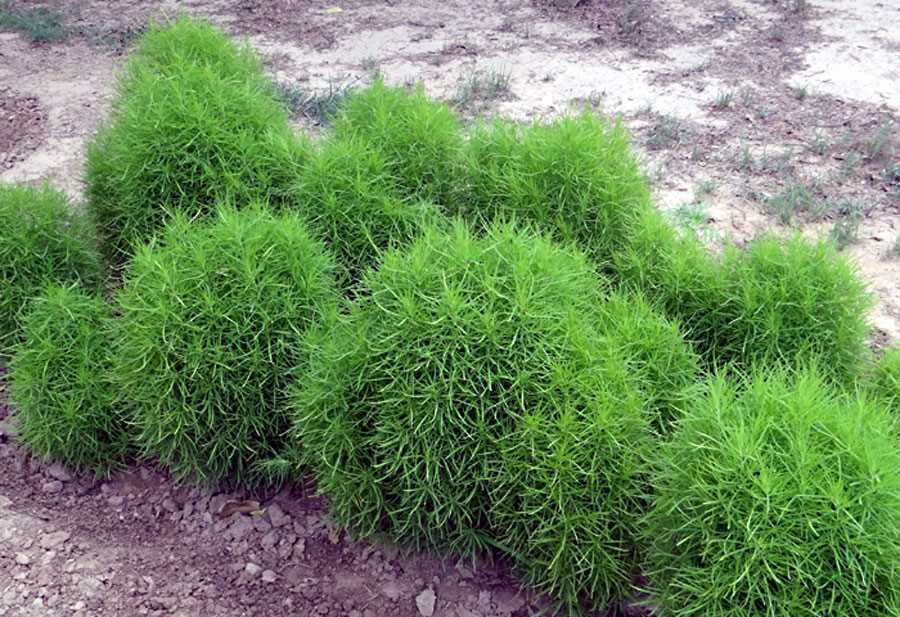
When it comes to growing a seedling of Kochia, sowing the seeds is the first and crucial step. Here are some expert tips on how to sow the seeds effectively:
- Prepare the soil: Kochia prefers well-draining soil, so make sure to prepare the soil properly. Remove any weeds or debris and loosen the soil to ensure good root growth.
- Choose the right time: Kochia seeds should be sowed in early spring or late summer, when the soil temperature is around 60-70°F (15-21°C). This is the optimal temperature range for germination.
- Sow the seeds: Scatter the Kochia seeds evenly over the prepared soil. Avoid sowing the seeds too densely, as it can inhibit their growth. Gently press the seeds into the soil, ensuring good seed-to-soil contact.
- Provide water: After sowing the seeds, water the soil lightly to keep it moist. Avoid overwatering, as it can lead to rotting of the seeds.
- Protect the seeds: To protect the seeds from birds or other animals, you can cover the sown area with a thin layer of mulch or netting. This will prevent any disturbances and allow the seeds to germinate undisturbed.
Once you have sown the seeds, it’s important to provide the proper care to ensure successful germination and growth. Check out our next section on seedling care for more information.
Provide Adequate Watering
- Water is essential for the growth and development of kochia seedlings.
- Ensure that the soil is consistently moist, but not saturated, throughout the growing season.
- Check the moisture level of the soil by inserting your finger into the soil up to your first knuckle. If it feels dry, it’s time to water.
- Water the seedlings deeply, allowing the water to penetrate down to the root zone. This encourages the roots to grow deeper into the soil.
- However, avoid overwatering, as it can lead to root rot and other fungal diseases.
- Water the seedlings in the early morning or late afternoon to minimize evaporation and to ensure that the foliage has enough time to dry before evening.
- Consider using a soaker hose or drip irrigation system to provide a slow and consistent supply of water directly to the roots.
- During dry periods or hot weather, you may need to water the seedlings more frequently to prevent wilting.
By providing adequate and consistent watering, you can ensure the healthy growth and development of your kochia seedlings.
Ensure Proper Sunlight
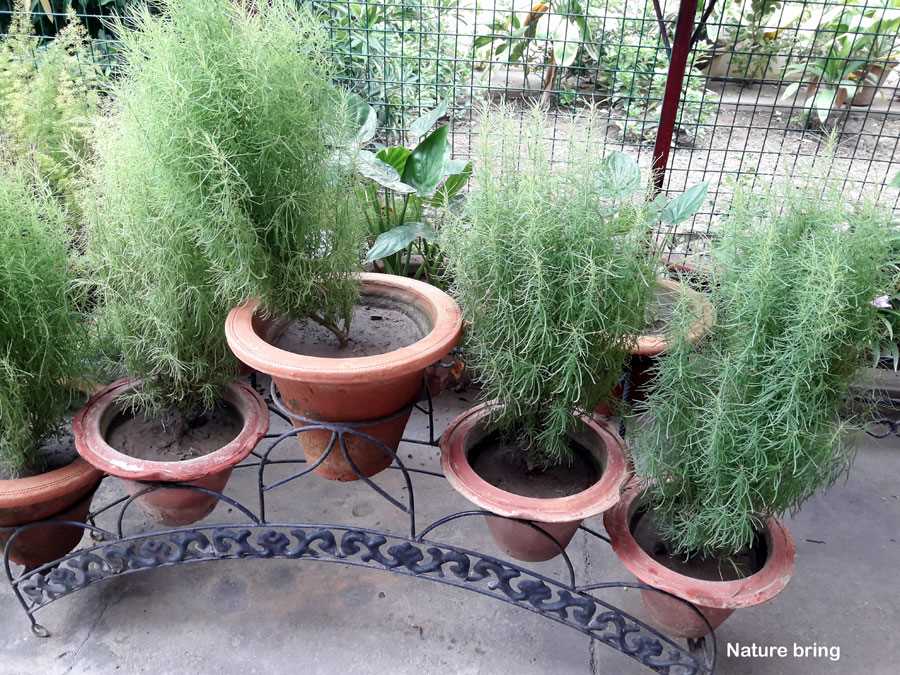
To successfully grow a seedling of Kochia, it is essential to provide the plant with proper sunlight. Kochia is a sun-loving plant, so it requires at least six to eight hours of direct sunlight per day. Here are some tips for ensuring proper sunlight for your Kochia seedling:
- Choose a sunny location: Select a spot in your garden that receives full sun exposure throughout the day. Avoid areas with shade or areas that are prone to constant shade from nearby structures or trees.
- Monitor sun orientation: Observe the movement of the sun in your garden throughout the day. Make sure the chosen spot for your Kochia seedling is not obstructed by shadows from buildings or fences, as this can limit the amount of sunlight the plant receives.
- Consider container placement: If you are growing your Kochia seedling in a container, ensure that it is placed in a location where it will receive maximum sunlight. You can move the container around as needed to follow the sun’s path throughout the day.
- Provide some shade in extreme heat: While Kochia thrives in full sun, it may benefit from some shade during extremely hot summer days. Consider using a shade cloth or placing the container in a location that provides partial shade during the hottest hours of the day to prevent sunburn.
By ensuring proper sunlight for your Kochia seedling, you will help promote healthy growth and vibrant foliage. Remember to regularly monitor the plant’s sunlight exposure and make any necessary adjustments to optimize its growing conditions.
Protect from Pests and Diseases
Protecting kochia seedlings from pests and diseases is essential for their healthy growth and development. Here are some expert tips on how to keep your kochia plants safe:
1. Monitor for Pests
- Regularly inspect your kochia plants for any signs of pest infestation.
- Common pests that can affect kochia seedlings include aphids, mites, and beetles.
- If you notice any pests, take immediate action to prevent them from spreading and causing damage.
2. Use Organic Pest Control
- Consider using organic pest control methods to minimize the use of harmful chemicals.
- Introducing natural predators, such as ladybugs, can help control aphids and other small pests.
- Erecting physical barriers, such as fine mesh netting, can prevent insects from reaching your kochia plants.
3. Provide Adequate Watering
- Adequate watering can help prevent the onset of certain diseases, such as powdery mildew.
- Avoid overwatering, as it can lead to root rot and other fungal diseases.
- Water your kochia plants at the base, avoiding wetting the leaves to minimize disease spread.
4. Practice Crop Rotation
- Rotate your kochia plants with other crops to prevent the buildup of pests and diseases in the soil.
- Crop rotation can break pest and disease cycles and improve the overall health of your garden.
5. Maintain Proper Spacing
- Plant your kochia seedlings at the recommended spacing to promote good air circulation.
- Crowded plants are more susceptible to diseases, as they create a favorable environment for pathogens to thrive.
6. Remove Infected Plants
- If you notice any kochia plants that are severely infected with pests or diseases, remove them immediately.
- Removing infected plants can help prevent the spread of pests and diseases to healthy plants.
By following these tips, you can protect your kochia seedlings from pests and diseases, ensuring their successful growth and development.
Transplanting and Picking
Transplanting and picking is an essential step in the growth process of kochia seedlings. It allows the young plants to have more space to develop and ensures their optimal growth. Here are some expert tips to help you successfully transplant and pick your kochia seedlings.
When to Transplant
Transplanting should be done when the kochia seedlings have grown their first true leaves and are about 3-4 inches tall. At this stage, the seedlings are strong enough to survive the transplanting process and adapt to their new location.
Preparing the New Location
Before transplanting, prepare the new location by clearing any weeds or debris. Ensure that the soil is well-draining and has a pH level between 6.0 and 7.5, which is ideal for kochia growth. It’s also a good idea to add compost or organic matter to improve the soil quality.
Transplanting Process
Here is a step-by-step guide to transplanting your kochia seedlings:
- Dig a hole in the new location that is slightly larger than the root ball of the seedling.
- Carefully remove the seedling from its original container, being mindful of the roots.
- Place the seedling in the hole, positioning it at the same depth it was previously planted.
- Gently backfill the hole with soil, making sure to remove any air pockets by pressing the soil firmly around the seedling.
- Water the freshly transplanted seedling thoroughly to help settle the soil.
Picking Seedlings
Picking seedlings refers to the process of thinning out the weaker or unwanted plants to allow the stronger ones to thrive. After the kochia seedlings have been transplanted and have had time to establish themselves, you can begin the picking process.
To pick seedlings:
- Identify the weaker seedlings or those that are too close together.
- Use scissors or gardening shears to carefully remove the unwanted seedlings at their base, taking care not to damage the root system of the desired plants.
- Space the remaining seedlings based on the recommended distance for kochia plants, typically 12-18 inches apart.
Picking seedlings helps eliminate competition for resources and allows the remaining kochia plants to grow stronger and healthier.
By following these expert tips, you can ensure successful transplanting and picking of your kochia seedlings, setting them up for optimal growth and development.
Expert Tips for Successful Growth
1. Choose the Right Variety
When selecting a kochia seedling, it’s important to choose the right variety that suits your climate and growing conditions. Some varieties are more tolerant of heat, drought, or cold, so do your research and choose accordingly.
2. Prepare the Soil
Kochia prefers well-drained soil with a pH range of 6.0 to 8.0. Before sowing the seeds, make sure to prepare the soil by removing any weeds or debris and adding organic matter, such as compost or well-rotted manure, to help improve soil fertility.
3. Sow the Seeds
Sow the kochia seeds directly into the prepared soil, spacing them about 12 to 18 inches apart. Make sure to sow the seeds at a depth of about 1/4 inch and lightly cover them with soil. Water the area gently to keep the soil moist, but avoid overwatering as kochia is drought-tolerant.
4. Provide Adequate Sunlight
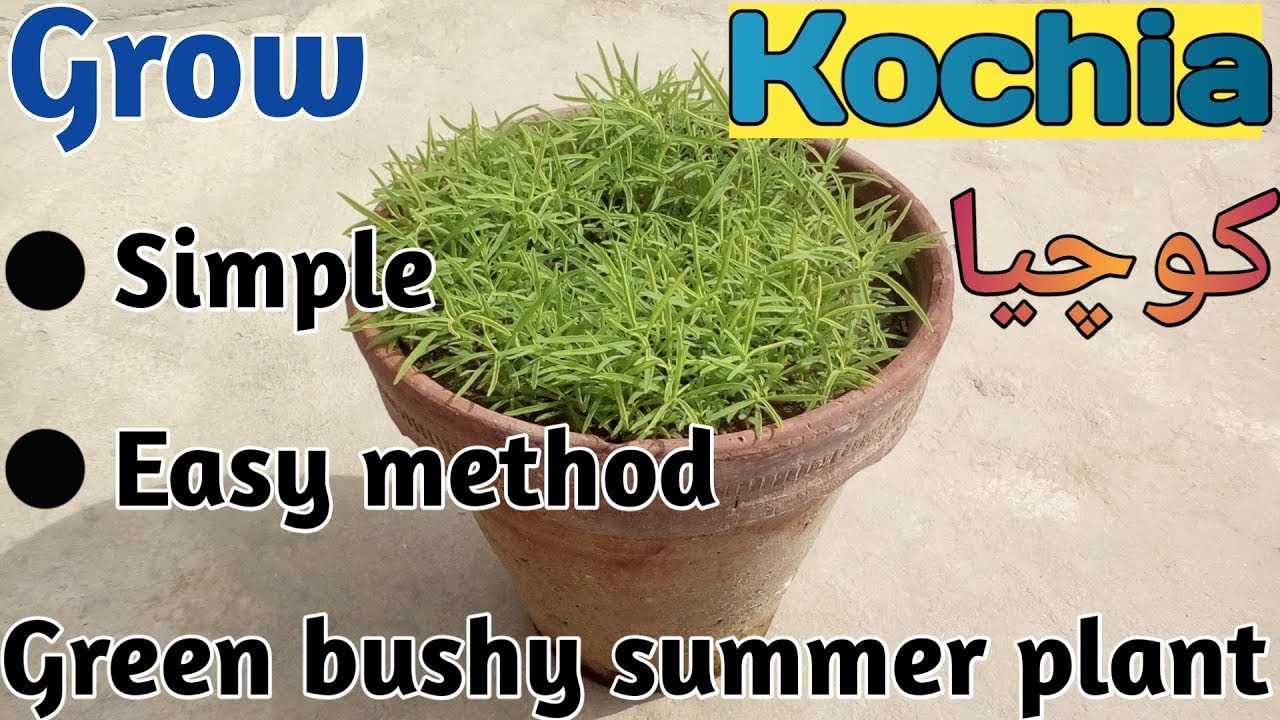
Kochia thrives in full sunlight, so make sure to choose a location that receives at least 6 to 8 hours of direct sunlight per day. Lack of sunlight can result in weak and leggy growth.
5. Water Carefully
While kochia is drought-tolerant, it still requires some watering to establish strong roots. Water the seedlings deeply once a week, providing about 1 inch of water per week. Avoid frequent shallow watering, as it can lead to shallow root development.
6. Fertilize Wisely
To promote healthy growth, fertilize the kochia seedlings with a balanced fertilizer about 4 to 6 weeks after sowing. Follow the manufacturer’s instructions for application rates and frequency.
7. Control Weeds
Regularly remove any weeds that may compete with the kochia seedlings for nutrients and water. Mulching around the plants can also help suppress weed growth.
8. Prune and Pinch
To encourage bushier growth, prune and pinch off the top of the kochia seedlings once they reach about 6 to 8 inches in height. This will promote lateral branching and result in a more compact, fuller plant.
9. Monitor for Pests and Diseases
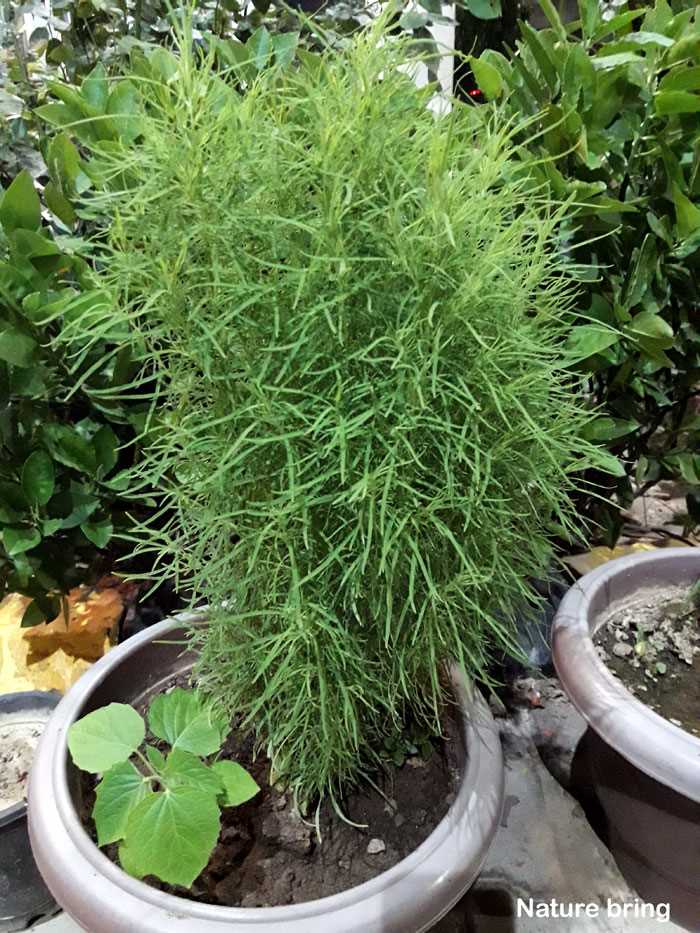
Keep an eye out for common pests and diseases that may affect kochia, such as aphids, powdery mildew, or leaf spot. Use appropriate organic or chemical control methods to prevent or manage infestations.
10. Harvest with Care
When the kochia plants reach their desired height or have developed vibrant colors, they can be harvested. Cut the stems near the soil level using clean, sharp scissors or pruners. Handle the harvested kochia with care to avoid damaging the delicate foliage.
By following these expert tips, you can ensure successful growth and enjoy the beauty of kochia in your garden or landscape.
Questions and Answers:
What is kochia?
Kochia is a type of plant that belongs to the Amaranthaceae family. It is also known as burning bush, summer cypress, or Mexican fireweed. It is an annual plant native to Eurasia and is commonly grown as an ornamental plant.
How do you grow a seedling of kochia?
To grow a seedling of kochia, you can start by sowing the seeds indoors about 4-6 weeks before the last frost date. Fill a seed tray with seed-starting mix and lightly press the seeds into the soil, keeping them about 1/4 inch apart. Water the seeds gently and keep the tray in a warm location with plenty of sunlight. Once the seedlings have sprouted, you can transplant them into individual pots or a well-draining garden bed.
What are the care requirements for kochia seedlings?
Kochia seedlings require regular watering to keep the soil moist but not waterlogged. They also need full sun exposure for at least 6 hours a day. Fertilize the seedlings every two weeks with a balanced liquid fertilizer. Monitor the seedlings for any signs of pests or diseases and take appropriate action if necessary. When the seedlings are about 4-6 inches tall, you can start pinching back the tips to encourage bushier growth.
How do you pick kochia seedlings?
Picking kochia seedlings involves thinning out the weaker and overcrowded seedlings to give the remaining plants enough space to grow. When the seedlings have developed their first set of true leaves, you can carefully dig them up and transplant them to a larger pot or garden bed. Be sure to handle the seedlings gently to avoid damaging their delicate roots.
Can kochia be grown in containers?
Yes, kochia can be grown in containers as long as the containers are large enough to accommodate the mature size of the plant. Use a well-draining potting mix and make sure the container has drainage holes at the bottom. Place the container in a location that receives full sun for at least 6 hours a day. Water the plant regularly and fertilize it every two weeks during the growing season.
Is kochia an invasive plant?
Yes, kochia has the potential to become invasive in certain regions. It is known to spread rapidly and compete with native plants for resources. It is recommended to check with your local authorities or plant experts before growing kochia to ensure it is not considered invasive in your area.







